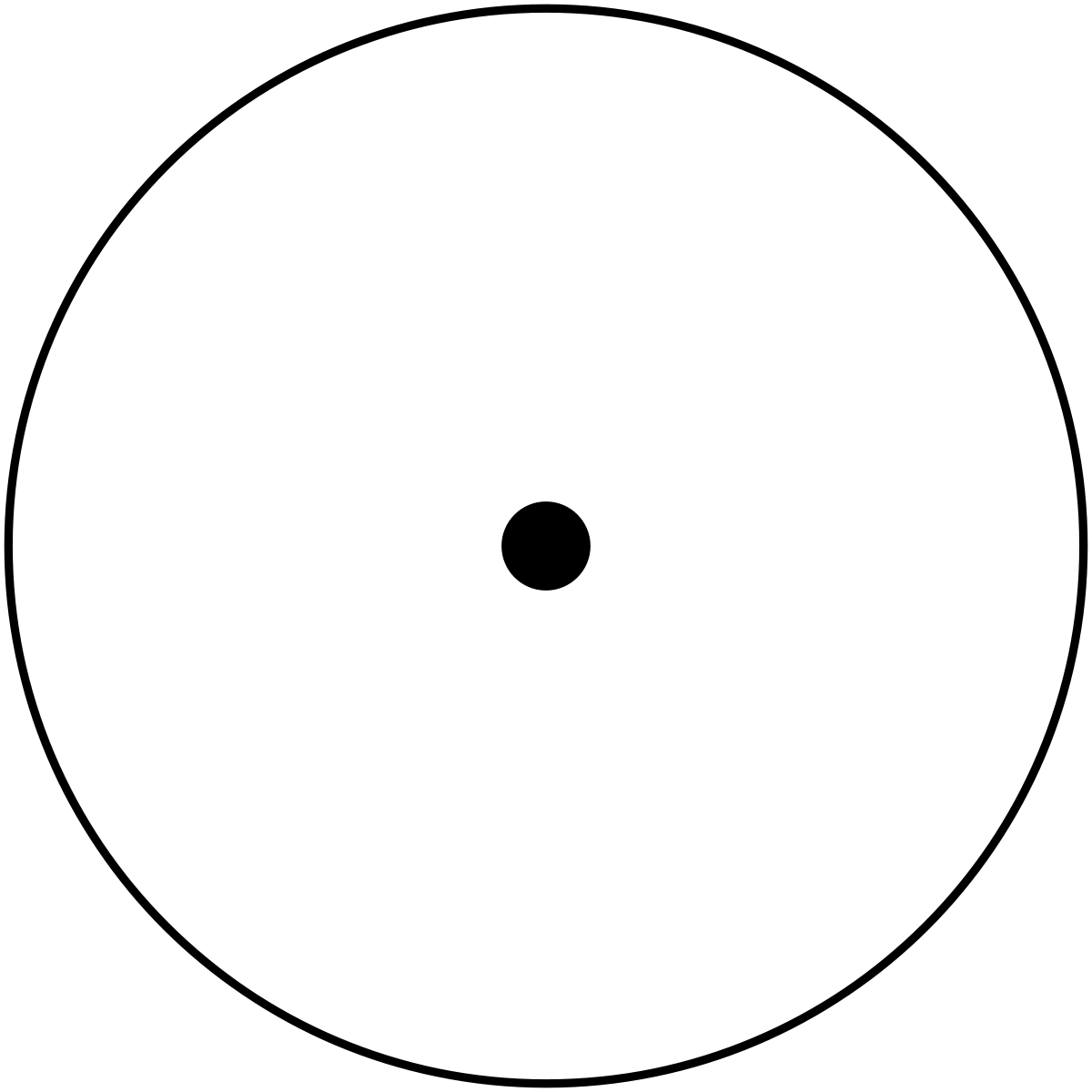
-by Tim Staples, Tim was raised a Southern Baptist. Although he fell away from the faith of his childhood, Tim came back to faith in Christ during his late teen years through the witness of Christian televangelists. Soon after, Tim joined the Marine Corps.
“The “centering prayer” movement is a relatively new phenomenon in the Church, but it has become remarkably widespread. In some areas of the U.S., for example, you will find centering prayer meetings almost as common as rosary prayer groups or Bible studies.
Notwithstanding its acceptance in some quarters, however, at its core it is incompatible with Catholic teaching for at least three reasons, among others we could consider.
First, centering prayer has as a constitutive element a monistic view of God in relation to man. Monism is the belief that there is no essential distinction between the creature and the creator.
Fr. Thomas Keating, a Trappist monk who helped found the centering prayer movement in the 1970s, gives us what could be considered a textbook definition of monism when he describes in his own words what he calls “the spiritual journey.”
In this video, Fr. Keating says the essence of the spiritual life can be summed up in these three steps:
“The realization… that there is an Other, capital O.”
“To try to become the Other, still capital O.”
“The realization that there is no Other. You and the Other are one… always have been, always will be. You just think that you aren’t.”
The central problem with this “third step” can hardly be overstated. It is monism, plain and simple. Fr. Keating is not speaking of theosis, of Christians being made “partakers of the divine nature” through union with Jesus Christ, as we find revealed in 2 Peter 1:3-4. He is talking about the realization that there is no individual at all. There is only “the Other,” or God.
Now, some will object that in the first two steps, Fr. Keating acknowledges that “there is an Other” distinct from the self. And he will often present similar words in varying contexts. In fact, in what has become his manifesto on centering prayer, Open Heart, Open Mind, Fr. Keating provides:
“God and our true self are not separate. Though we are not God, God and our true self are the same thing.”
Notice the seeming contradiction? Just as in his video, Fr. Keating will seemingly declare plainly that there is an “Other” that is not us, but he will then say there “is no other” at all. Seems contradictory, but it’s really not. As long as we have not attained full union with God, there will be a “false self” that “thinks” it is distinct. But when we do fully attain union, all thought of self or anything other than the Absolute Being who is beyond any and all labels or “names” will be annihilated. All that remains will be the truth of the absolute “One.”
Vatican Council I rejected Fr. Keating’s monistic view, declaring in Session Three, The Dogmatic Constitution on the Catholic Faith, chapter 1, par. 2:
“Since He is one, singular, completely simple and unchangeable spiritual substance, He must be declared to be in reality and in essence, distinct from the world, supremely happy in Himself and from Himself, and inexpressibly loftier than anything besides Himself which either exists or can be imagined.”
The council then declared infallibly in canon 3 of On God the Creator of all Things:
“If anyone says that the substance or essence of God and that of all things are one and the same: let him be anathema.”
Moreover, in canon 5:
“If anyone does not confess that the world and all things which are contained in it, both spiritual and material, were produced, according to their whole substance, out of nothing by God… let him be anathema.”
The idea that the self and God are the same thing should eliminate centering prayer as an option for Catholics. But there is a second reason why centering prayer is incompatible with Catholic teaching: it says that the ultimate goal of the spiritual life is the “realization” that we are God.
In his book Open Mind, Open Heart, Fr. Keating tells us, “The chief thing that separates us from God is the thought that we are separated from him” (33). This is false.
A scrupulous person, for example, may think he is separated from God and not be. More importantly, Sacred Scripture makes it quite clear what separates us from God. Isaiah tells us that “your iniquities have made a separation between you and your God, and your sins have hid his face from you” (Isaiah 59:2; see also Psalm 66:18; I John 1:8-9, etc.) The Catechism concurs:
“God predestines no one to go to hell; for this, a willful turning away from God (a mortal sin) is necessary, and persistence in it until the end (1037).”
“To die in mortal sin without repenting and accepting God’s merciful love means remaining separated from him forever by our own free choice. This state of definitive self-exclusion from communion with God and the blessed is called “hell” (1033).”
Sin separates us from God—nothing else. But Fr. Keating says we are really never separated from God to begin with; we only “think we are.” Thus, the spiritual life is not a matter of conversion in order to become something you are not, namely, a saint in union with God. Rather, it is simply to “realize” what you always have been and always will be: God.
And this leads us to the third essential problem with centering prayer: it is outside of Catholic orthopraxy. In fact, centering prayer is not really prayer at all.
For Fr. Keating, prayer is a “journey to the true self”—the realization that we are God. And the key for this realization to occur is for the Christian to empty himself of all rational activity. He must make his mind an absolute void.
In Open Mind, Open Heart, we discover the essence of this “prayer”:
“If you are aware of no thoughts, you are aware of something and that is a thought. If at that point you can lose the awareness that you are aware of no thoughts, you will move into pure consciousness. In that state there is no consciousness of self. . . . This is what divine union is. There is no reflection of self. . . . So long as you feel united with God, it cannot be full union. So long as there is a thought, it is not full union (73-74).”
This emptying of all thought even includes thoughts of God, the word of God, and the mysteries of our redemption. Good or evil, beautiful or ugly, all thoughts must go. There is a saying in the centering prayer movement that says “ten thousand thoughts represent ten thousand opportunities to return to God,” because thought is believed to separate us from God.
A question you might be asking: “How could Christianity get mixed up with something like this?” The answer can be found just three paragraphs down from the above section of Fr. Keating’s book:
“Centering prayer is an exercise in letting go. That is all it is. It lays aside every thought. One touch of divine love enables you to take all the pleasures of the world and throw them in the wastebasket. Reflecting on spiritual communications diminishes them. The Diamond Sutra says it all: “Try to develop a mind that does not cling to anything.””
The Diamond Sutra is Buddhist, folks. The goals of centering prayer—no intellectual activity . . . no concepts . . . no words—are Buddhist. Far from the traditional Catholic understanding of prayer as a heart-to-heart dialogue or communication of the creature with his Creator, centering prayer is focused inward, with the goal of eliminating all thoughts or even thoughts of thoughts until one reaches a state where the mind is an absolute void and there is no knowledge of self or thought at all.
The Catechism expressly declares of this type of “prayer” to be erroneous:
“In the battle of prayer, we must face in ourselves and around us erroneous notions of prayer. Some people view prayer . . . as an effort of concentration to reach a mental void (2726).”
The Catholic Christian faith is a religion of the word. To advocate movement away from the word is to advocate movement away from the Word made flesh. This is antithetical to true Catholic Christian prayer. Even though she was a great mystic, St. Teresa of Avila emphasized the essential role of the word of God and the mind in prayer: “For it to be prayer at all, the mind must take part in it” (Interior Castle, Part I, i). Pope St. John Paul II, in a homily of November 1, 1982, added:
“[St. Teresa’s teaching] is valid even in our day, against some methods of prayer which are not inspired by the gospel and which in practice tend to set Christ aside in the preference for a mental void which makes no sense in Christianity. Any method of prayer is valid insofar as it is inspired by Christ and leads to Christ who is the Way, the Truth, and the Life (cf. John 14:6).”
The intellect and will are essential to man’s nature. We can no more detach ourselves from them than we can detach ourselves from being human. Indeed, apart from the functioning of the human intellect and will, there can be no love. And we all know Jesus gave us the greatest commandment in Matthew 22:37:
“You shall love the Lord your God with all your heart, and with all your soul, and with all your mind.”
How radically different is authentic contemplative prayer from the mindless “centering prayer.” The Catechism, in paragraphs 2709-2719, says it all for Catholics. I will cite just two paragraphs here:
“Contemplation is a gaze of faith, fixed on Jesus. . . . Contemplation also turns its gaze on the mysteries of the life of Christ. Thus it learns the “interior knowledge of our Lord,” the more to love him and follow him (cf. St. Ignatius of Loyola, Spiritual Exercises, 104).
Contemplative prayer is hearing the Word of God. Far from being passive, such attentiveness is the obedience of faith. . . . It participates in the “Yes” of the Son . . . and the Fiat of God’s lowly handmaid (2715-16).””
Love & truth,
Matthew

